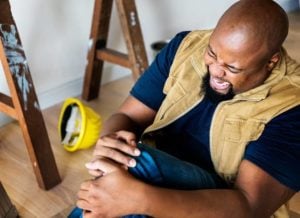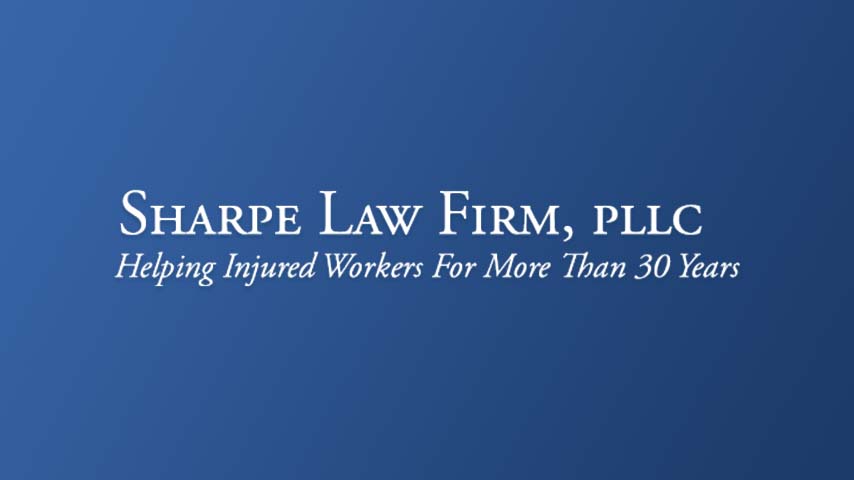A Word of Advice About Death Benefits
The loss of a loved one to a job injury is a devastating tragedy. This page is designed to help the survivors of an L&I fatality make good decisions in their time of need. If you are involved in the handling of the affairs of someone diseased because of a job injury you are facing challenges and obstacles. Read this page and take action so that you can protect yourself financially. Nothing will bring back your loved one, however it is important that you take the time to understand the information we have here for you. Do not let yourself be so devastated by your loss that you lose your benefits. Later on or even now these things will become very important and they need to be handled before it’s too late. You will be glad you did.
How Do I File an L&I Claim For a Job Injury Death?
From a mechanical standpoint you simply file an application for benefits. From a practical standpoint this process is very complex. Get some legal advice. it can make a big difference.
Why Should I Apply for Benefits?
Apply for L&I death benefits.
- You owe it to your spouse or loved one to do something about this.
- These benefits can be worth a lot of money. A widows pension can last a lifetime.
- There is a time limit called the statue of limitations. Do this now, before its too late.
What are the Job Fatality Benefits for L&I Claims RCW 51.32.050
A successful claim for L&I death benefits makes you eligible for:
-
Immediate Cash Payment
A one-time immediate payment will be made when a death is related to an industrial injury or occupational disease if there is a spouse/registered domestic partner, child, or dependent. The amount of the immediate payment is 100 percent of the average monthly wage in the state. (See Death and Burial Rates Chart), or Contact us.
-
Burial Benefits and Funeral Expenses
A burial benefit and funeral expenses are payable when a death is related to the industrial injury or occupational disease. The maximum amount paid is up to 200 percent of the average monthly wage in the state. (See Death and Burial Rates Chart) For information on exactly which expenses are covered or reimbursed see policy 15.70, or Contact us.
-
Monthly Survivor Benefits, also known as Widow/Widower Pension
This is the brass ring of survivor benefits. You owe it to yourself to make this happen. The amount of a monthly pension varies depending upon who gets it. The pension first goes to the surviving spouse or if applicable the registered domestic partner. If none then the children, or other dependents. The variations are:
- Surviving Spouse/Registered Domestic Partner. For recent injuries, a surviving spouse/registered domestic partner receives 60 percent of the wages at the time of injury up to the maximum level allowed by law. If the worker had minor children, an additional 2 percent per child is paid, up to an additional maximum of 10 percent. This payment looks like time loss but is paid once monthly on the 15th. If a surviving spouse or registered domestic partner remarries or enters into another registered domestic partnership, their monthly pension does not continue. The spouse is given the option of:
- A lump sum settlement of 24 times the monthly compensation, or 50% of the remaining annuity value of the pension, whichever is less; or
- Declining the settlement and maintaining their right to reinstate pension benefits if the marriage or registered domestic partnership ends because of death, divorce, or termination of the domestic partnership.
-
Children’s Benefits when there is no eligible spouse or registered domestic partner.
A monthly benefit of 35 percent of the worker’s wage is paid to the guardian of a minor dependent. Another 15 percent of the wage is paid for each additional child up to a maximum benefit equal to 65 percent of the wage at the time of injury. If there is more than one child, benefits are divided equally among them. Benefits end for minor dependents when they reach age 18 (up to 23 if they are full-time students in an accredited school).
-
Other Dependent Benefits
The worker leaves no surviving spouse or child then qualified dependents can receive payments if they were dependent on the worker’s earnings RCW 51.32.050(5). Dependents can include such relatives as a father, mother, grandparents, grandchildren, brothers, sisters, nieces, and nephews. RCW 51.08. The benefit is equal to half the average monthly support received by the dependent during the year preceding the injury. The benefit limit is 65 percent of the worker’s wage or maximum benefit level, whichever is less, for all dependents. The payments end when the necessity that created the dependency would have ended had the injury not occurred.
Is There a Time Deadline to File for Survivors Benefits?
Yes there is. One year for injuries. Two years or more for occupational diseases. Miss your deadline and you lose your claim. Get legal advice about this if you are in doubt.
Documentation Needed to File a Successful Survivors Benefit Claim.
- Application filed before the statute of limitations runs
- Marriage certificate
- Death certificate
- If minor children are involved then birth certificates and custody documents (if any).
A Legal Analysis of L&I Job Fatality Claims: Did the Work Related Activity Cause the Death?
Yes – The Fatality Is An L&I Claim if Work Caused the Death.
- When the fatality is an L&I claim then file an application for benefits
- To get an L&I claim accepted – If the job activity or exposure was a cause of or accelerated the death, (it doesn’t need to be the only cause) then the fatality is (or should be) an L&I claim. So file an application for benefits
- Who files the application for pension benefits? – A beneficiary does the filing RCW 51.08.020. Beneficiaries are spouse, registered domestic partner, or children. If there are no beneficiaries then a dependent does the filing RCW 51.08.050. Need an application? Contact us or talk to L&I.
No – The Fatality Is Not an L&I Claim if Work Did Not Cause the Death.
Unrelated Incident
Not all on the job fatalities result in L&I claims. For example, a person who dies of a heart attack while doing non stressful work will not have a death which would likely result in an L&I claim.
The fatality may not be job related, but there may still be a personal injury claim. For example many commutes to and from the job are not covered by L&I. However a commuting fatality can still result in a personal injury claim against the negligent driver who caused the death.
Suicide. What if the Death May be a Suicide?
Suicide is different. L&I has been known to look unfavorably on suicides. If the death is or might be a suicide you must see this link for advice: L&I & Suicide
What if the Fatality is Not an L&I Claim, But There is an Open L&I Claim at the Time of Death
- Pension. If injured worker’s status immediately prior to an unrelated death was that he could never work again then it would be correct to formally request a pension for a spouse or children. This pension request is not based on the death, but rather on the workers’ L&I claim status at the time of death.
- Permanent Partial Disability. If injured worker was fixed and stable and had time loss money or permanent partial disability money owed by L&I at the time of death, it should be paid to the surviving spouse, or if none the surviving children, or if neither then according to the will, but if none then according to intestate distribution scheme. RCW 51.32.040(2).
There Is No L&I Claim For The Fatality, But Possibly There Should Be One
This happens often. For example:
- A fatality by heart attack where the deceased was performing stressful work. The job may have caused the heart attack. L&I may not agree, but this an be a pension case for the survivors. The challenge is proving it, don’t give up.
- A fatality which is the result of an occupational exposure such as a lung condition where the deceased worked recently or anytime in the past in an environment where he breathed toxic chemicals, fumes, wood fibers, dust or the like.
- A fatality to a traveling employee.
- A fatality while running an errand for the boss.
- A fatality while off the clock but still working.
Don’t believe everything L&I tells you. If they deny a claim they could be wrong. If common sense or the doctor tells you some job somewhere could have contributed to this death than contact us or protest before it’s too late.
Cause of Death. If any job contributed to the death then file an L&I claim:
- This is tru even if the job injury or exposure happened many years ago.
- This is true even if the job only partly contributed to the death.
There are many fatalities which were caused, at least in part by the job, but nobody files a claim. Don’t let that happen to you! THE SOLUTION IS TO GET LEGAL HELP . Call on us for a free consultation.
Investigation of L&I On the Job Death
-Should there be an investigation?
- cause of death
- responsibility for death
- were safety rules being followed
-How to start an investigation
- most are automatic
– Types of investigations
- L&I investigation
- Division of occupational safety (DOSH)
- Conducted by L&I investigation of workplace death results are available at L&I’s Public Records Unit @ LNI.wa.gov
What is Wrongful Death?
Wrongful death is a concept important in personal injury law. It is a death caused by someone else’s fault. Wrongful death requires proof of fault as do all personal injury claims. See Wrongful Death for details. This is different then the L&I death benefit where proof of fault is not required. Said another way, a claim for L&I Death Benefits requires that the death happened on the job. A personal injury wrongful death claim requires the fault of another person, a person who is not the employer or co-employee of the decedent. These are two different claims.
Can I Have Both an L&I Death Benefit Claim and a Wrongful Death Claim?
Yes you can have both an L&I Death Benefit Claim and a Wrongful Death Claim. When you have both, the wrongful death claim is called a third party claim. Get advice how to proceed with both claims. If you wish, contact us.
I am a Surviving Spouse/Widow/Widower and I am Not Sure What to Do
Nobody taught you how to handle an L&I fatality claim. This stuff is complicated. Now suddenly this has become your job. You owe it to your spouse and yourself to make something of this. Call on us. We can help. The Sharpe Law Firm gets Death Benefits for survivors 206-343-1988












